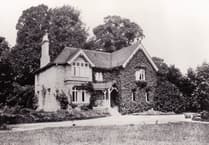A CONTROVERSIAL decision to demolish a rare brutalist church in Batheaston has sparked debate over heritage, planning policy, and community voice in the future of local landmarks.
Built in Batheaston in 1967, the Church of the Good Shepherd is a rare example of brutalist architecture in the Bath area. It closed in March 2020, amid the Covid-19 pandemic and a declining congregation. Now, despite major opposition from the village,the Diocese of Clifton has been given planning permission by Bath and North East Somerset Council to demolish it and build four houses on the site.
Local councillor Sarah Warren (Bathavon South, Liberal Democrat) had called in the application to be considered and voted on by the council’s planning committee. But, despite repeated requests from Ms Warren, the chair and vice chair of the planning committee agreed that the application could be delegated to the council’s planning officers, who then granted planning permission for the plans.
The report by planning officers said the plan to build homes in Batheaston was in accordance with the council’s development plan and that policies to protect buildings of importance “do not provide a strong reason for refusing the development.” The report said: “It is considered that the harms arising from the development do not significantly and demonstrably outweigh the benefits.”
The Catholic church was designed by Bath architect Martin Fisher — who was also behind the design of St Peter and Paul’s in Combe Down — and consists of poured concrete blocks. It does not have a traditional spire, but instead its square roof slopes up to the south east corner, reflecting the tent of a travelling pilgrim. Rather than stained glass, it uses blocks of a material called “Kalwall,” which look almost concrete-like from outside.
Their coloured pattern can be seen from the inside as the light shines in through the window but is only revealed to people outside when the church is lit up from within. The distinctive church has divided opinion in the village since it was built, with some seeing it as an “important historical statement” and others as an “eyesore” and “the village joke.”
But Bath and North East Somerset Council conservation officer Caroline Power disagreed. In her comments, she wrote: “In contrast to the heritage statement, this analysis considers the stark contrast in form and materiality within the conservation area as a deliberate and successful design ploy to make this church stand out as a notable statement of religious strength.”
In a late intervention into the planning process, the Council for British Archaeology wrote to Bath and North East Somerset Council to give their backing to giving the building locally listed status. Listed buildings caseworker Dr Alison Edwards wrote: “The existing building on the site is a characteristic and interesting example of mid-twentieth century religious architecture, which makes a positive contribution to the Batheaston Conservation Area as an illustration of the social and architectural development of the area in the post-war period.”
.jpeg?trim=0,0,0,0&width=752&height=448&crop=752:448)

.png?width=209&height=140&crop=209:145,smart&quality=75)


Comments
This article has no comments yet. Be the first to leave a comment.